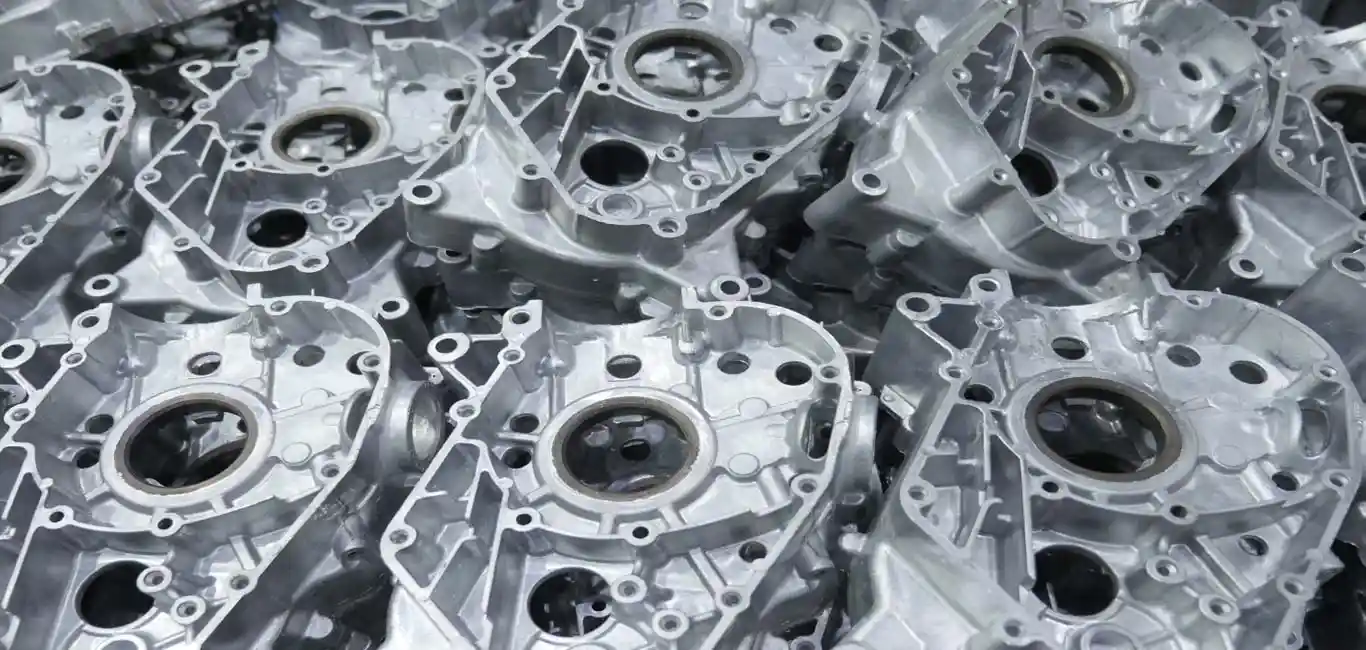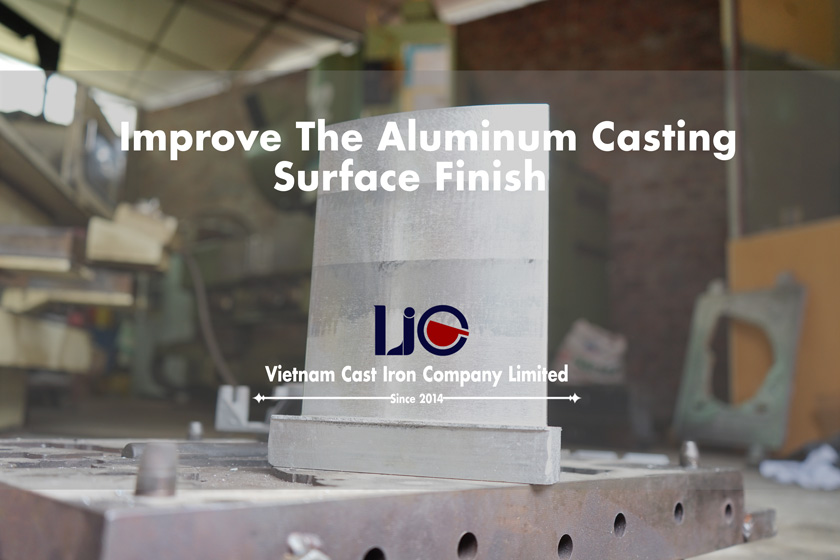Why Aluminum Casting is revolutionizing modern manufacturing
Understanding the Benefits and Selections of Aluminum Castings in Sector
Aluminum castings have actually become significantly vital across various industries due to their distinct homes and making versatility. Their lightweight and corrosion-resistant nature makes them ideal for demanding applications. Various spreading techniques allow for specific and complex layouts. As markets progress, comprehending the array of light weight aluminum spreading options and their benefits is important. This exploration raises concerns concerning their future role in manufacturing and sustainability. What lies in advance for light weight aluminum in these industries?
The Fundamentals of Aluminum Casting Processes
Aluminum casting processes vary in strategy, they all share a common goal: to change liquified light weight aluminum into specific shapes and elements. The main techniques of aluminum spreading consist of sand casting, pass away casting, and investment spreading. In sand spreading, mold and mildews are developed utilizing sand, allowing for complex layouts but commonly leading to a harsh surface area finish. Die casting utilizes high-pressure shot of liquified light weight aluminum into steel molds, producing high accuracy and smooth surfaces, ideal for automation. Investment casting, or lost-wax casting, involves creating a wax pattern coated with a ceramic shell, offering extraordinary information and dimensional precision. Each approach has its specific applications and considerations, including price, manufacturing volume, and complexity of the shapes generated. Recognizing these essential strategies is important for sectors that depend on light weight aluminum castings to satisfy their design and practical demands.
Trick Advantages of Using Aluminum Castings
Aluminum castings use countless benefits that make them a recommended option in different industries. Among the crucial advantages is their light-weight nature, which enables easier handling and lowered shipping expenses. This characteristic adds to enhanced power performance, specifically in automotive and aerospace applications. Furthermore, light weight aluminum shows outstanding rust resistance, extending the life-span of parts and decreasing upkeep needs.
Another benefit is the adaptability of light weight aluminum castings, which can be built right into complex shapes, enabling cutting-edge designs that standard products might not suit. The thermal and electrical conductivity of light weight aluminum additionally makes it ideal for applications needing warm dissipation or efficient electric links. In addition, light weight aluminum castings are recyclable, aligning with sustainability objectives and reducing ecological effect. Overall, the combination of stamina, durability, and flexibility makes aluminum castings a crucial component in modern-day production techniques throughout multiple industries.
Common Kinds Of Aluminum Castings
Aluminum castings are generated with different techniques, each matched for different applications and demands. Amongst the most typical methods are sand spreading, which provides versatility and cost-effectiveness, and pass away casting, understood for its accuracy and performance. Understanding these processes is essential for choosing the suitable casting technique for specific commercial demands.
Sand Casting Process
A considerable section of light weight aluminum castings in industry is produced with the sand spreading procedure, which is renowned for its versatility and cost-effectiveness. This technique involves producing a mold and mildew from a sand blend, enabling the production of intricate shapes and large components. Sand casting is especially advantageous for tiny to medium-sized production runs, as it calls for minimal first investment in tooling. The procedure starts with pattern production, adhered to by mold and mildew prep work, pouring liquified aluminum, and lastly, cooling and completing. The high thermal conductivity of light weight aluminum guarantees even cooling, decreasing the danger of defects. Sand spreading remains a favored selection for producers seeking efficiency and flexibility in their light weight aluminum spreading applications.
Die Casting Techniques
Die casting strategies represent an extremely reliable technique for generating light weight aluminum castings, particularly fit for high-volume production. These strategies mainly include two usual kinds: warm chamber and cool chamber pass away casting. In warm chamber die casting, the liquified light weight aluminum is infused right into the mold and mildew from a reservoir that is heated up, making it excellent for low-melting-point alloys. Conversely, cold chamber pass away casting involves putting the liquified aluminum right into a separate chamber prior to shot, which suits greater melting-point materials. Both approaches provide accuracy fit complicated geometries and achieving excellent surface coatings. In addition, pass away casting is known for its quick cycle times, decreasing manufacturing costs while preserving consistency in high quality across huge quantities of parts.
Applications in the Automotive Market
Transforming car design and efficiency, aluminum castings play a crucial duty in the vehicle industry. These castings contribute substantially to weight reduction, enhancing gas performance and overall vehicle characteristics. Secret applications include engine blocks, transmission housings, and suspension elements, where their light-weight nature and stamina are crucial.
Aluminum castings likewise permit for complex geometries, enabling suppliers to create complex layouts that maximize air movement and minimize drag. This capacity is particularly valuable in electrical and hybrid vehicles, where efficiency and performance are extremely important.
Additionally, the corrosion resistance of light weight aluminum expands the lifespan of automobile components, reducing maintenance expenses and improving vehicle reliability. The convenience of light weight aluminum castings supports both automation and personalized applications, making them a preferred choice among automotive engineers and designers. Aluminum Casting. As the sector remains to introduce, light weight aluminum castings will stay an important aspect in the search of advanced automobile innovations
Aerospace Sector Utilization
In the aerospace industry, aluminum castings are indispensable to the layout and functionality of airplane components. These castings are used in various applications, including engine parts, architectural components, and interior fittings. Their lightweight nature adds to enhanced fuel performance and total efficiency, which is important in aerospace engineering.
Aluminum castings additionally use exceptional strength-to-weight ratios, allowing suppliers to produce elaborate designs without jeopardizing structural honesty. The capacity to create complicated geometries makes aluminum casting a recommended selection for components that need accuracy and integrity.
In addition, aluminum's resistance to rust enhances the long life of aerospace components, minimizing maintenance prices and enhancing security (Aluminum Casting). The spreading process enables for high-volume manufacturing, meeting the industry's needs for performance. In general, aluminum castings play a pivotal function ahead of time aerospace innovation and enhancing aircraft style, contributing to the industry's continuous technologies

Benefits Over Other Materials
Aluminum castings offer substantial advantages over other products, making them a favored option in numerous markets. Among the main advantages is their lightweight nature, which adds to lowered power consumption and boosted efficiency in applications such as auto and aerospace. In addition, light weight aluminum shows superb corrosion resistance, enabling long term toughness and reduced maintenance expenses.
The product's exceptional thermal and electrical conductivity further enhances its charm, specifically in applications needing warmth dissipation or reliable power transfer. Aluminum Casting. Aluminum castings also offer exceptional dimensional stability, making sure accurate tolerances and minimizing the likelihood of flaws throughout the manufacturing process
Additionally, the convenience of light weight aluminum allows for complex shapes and intricate layouts, which can be achieved with numerous casting techniques. This adaptability makes light weight aluminum an important option for suppliers aiming to introduce while preserving cost-effectiveness and top quality. To wrap up, light weight aluminum castings stand apart because of their special mix of residential or commercial properties that cater to varied commercial needs.
Future Patterns in Aluminum Casting Modern Technology
Future fads in light weight aluminum spreading modern technology are significantly concentrated on automation and the development of innovative alloys. Automation stands to improve efficiency and precision in casting processes, decreasing labor prices and boosting item uniformity. Simultaneously, innovations in alloy formulas guarantee to increase the series of applications for light weight aluminum castings, attending to specific efficiency requirements in numerous industries.
Automation in Casting Procedures

Advanced Alloys Development
With the continuous advancement of material scientific research, the advancement of sophisticated alloys is readied to transform light weight aluminum casting modern technology markedly. These innovative alloys are made to improve mechanical residential or commercial properties, corrosion resistance, and thermal security, catering to diverse commercial applications. Scientists are concentrating on hybrid alloys that incorporate components such as magnesium, silicon, and zinc to accomplish peak performance. Furthermore, innovations in computational modeling and simulation are making it possible for the prediction of alloy habits under various problems, enhancing the design process. The assimilation of recycling technologies is also ending up being vital, enabling producers to generate high-performance light weight aluminum castings while lessening ecological influence. As these trends continue, the aluminum spreading industry is most likely to witness significant improvements in effectiveness, sustainability, and product high quality.
Often Asked Questions
How Is Aluminum Casting Eco Friendly?
The inquiry of light weight aluminum spreading's environmental discover this info here kindness emerges from its recyclability and lower energy consumption contrasted to other metals. Additionally, innovations in sustainable techniques even more boost its environmentally friendly credibility within manufacturing processes.
What Is the Typical Life Expectancy of Aluminum Castings?
The regular life-span of light weight aluminum castings varies based on application and environment, normally varying from numerous years to decades. Aspects such as direct exposure to harsh components and mechanical anxiety can significantly affect their resilience and long life.
Can Aluminum Castings Be Recycled?
Aluminum castings can undoubtedly be reused. This process greatly minimizes waste and conserves sources, allowing producers to recycle products successfully. Reusing light weight aluminum castings contributes to sustainability and lessens the ecological influence related to light weight aluminum production.
What Are the Common Issues in Aluminum Castings?
Usual flaws in aluminum castings include porosity, shrinkage, misalignment, and surface imperfections. These concerns can develop from poor putting methods, incorrect alloy structure, or inadequate cooling, inevitably influencing the quality and efficiency of the end product.
How Do I Pick the Right Aluminum Casting Refine?
Choosing the ideal light weight aluminum casting procedure requires evaluating production quantity, part intricacy, and desired residential properties. Aspects such as price, lead time, and material characteristics additionally influence the decision, making sure ideal outcomes for details continue reading this applications.